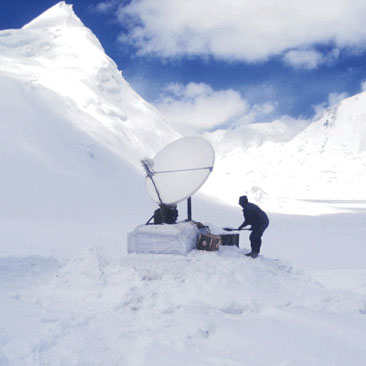Remote Internet Access
by David Kohanbash on March 6, 2014

When you are in the middle of nowhere how can you get online?
Often while working with robots you must travel to remote locations with no wired (copper/fiber) internet connection or wifi. In these cases you have two primary ways to get online. When I say “you” it can really be either you or the robot. There are times when you want to look up a datasheet, send an email, (check out this blog.) or upload some data; and there are times when the robot might need to be remotely operated or talk to some remote server.
Check out my Networking for Robotics tutorial for more details about some of the networking magic below!
Cellular
Using a 3G or 4G connection you can get online if there is cellular service in the area you are operating in (yes, there are still many areas with no cell coverage). If you need to get online for your own use, using a smart phone is often a quick and easy approach.
In order to get your robot online you can get a USB stick cellular modem from any major cellular provider (Verizon, AT&T, T-Mobile, etc..) and plug it into your robot. In many cases you might need to place it outside the robot and use a USB extension cable to plug it into the computer so you can get a good signal strength.

Many of the newer USB modems have configuration pages to modify how they behave. If you do not want the USB modem to go to sleep you will need to configure that, in order to allow incoming connections to connect without the device being asleep. You will also need to get a static IP for your USB modem to allow incoming connections. If you do not have a static IP, the IP you are given is often from an internal range (using NAT) that is not publicly accessible.
With many embedded systems you will not have the drivers to talk to the USB modem, in that case you can get a cellular router. This is also useful if you have several devices that want to talk over the internet. With a cellular router the USB modem can plug into the router, and then the router acts like any other router to provide networking to attached devices over standard RJ-45 ethernet connectors. One company that I have used many times for this type of access is CradlePoint.
Satellite
Satelite internet is great since it can be accessed from a wider range of locations then a cellular based connection, however it tends to cost a lot more. You need to be careful since many of satellite providers are limited to specific regions of the earth (since they use geosynchronous satellites) as opposed to working globally. One popular vendor of satellite phones and data services that can be used globally is Iridium. The Irridium products tend to look like old cell phones (think 1990 car phone) with beefy antennas, as opposed to satellite dishes and operate at slower bandwidths. Depending on the internet service you desire the satellite dish from some vendors can be several inches in diameter all the way up to several feet in diameter. One vendor with many fixed and mobile solutions is Ground Control The main image from this post is an example fixed satellite dish, and the image above this is an example of a portable unit. If you only need the satellite connection for a limited time it is often cheaper to rent one, then to purchase it. Here is an example company that I found in a Google search for renting satellite equipment from. Also if you are in certain regions of the world such as the United States or the UK, the cost of a satellite connection drops dramatically.




Comments
[…] If you are in a remote location and need to get on the internet check out this post for various ways to get online from the middle of nowhere. […]